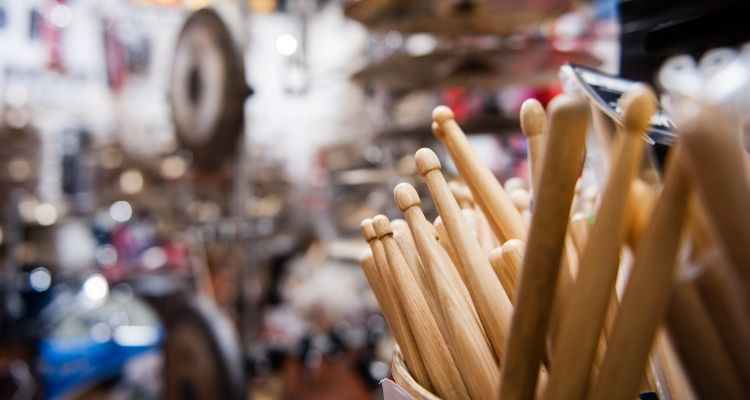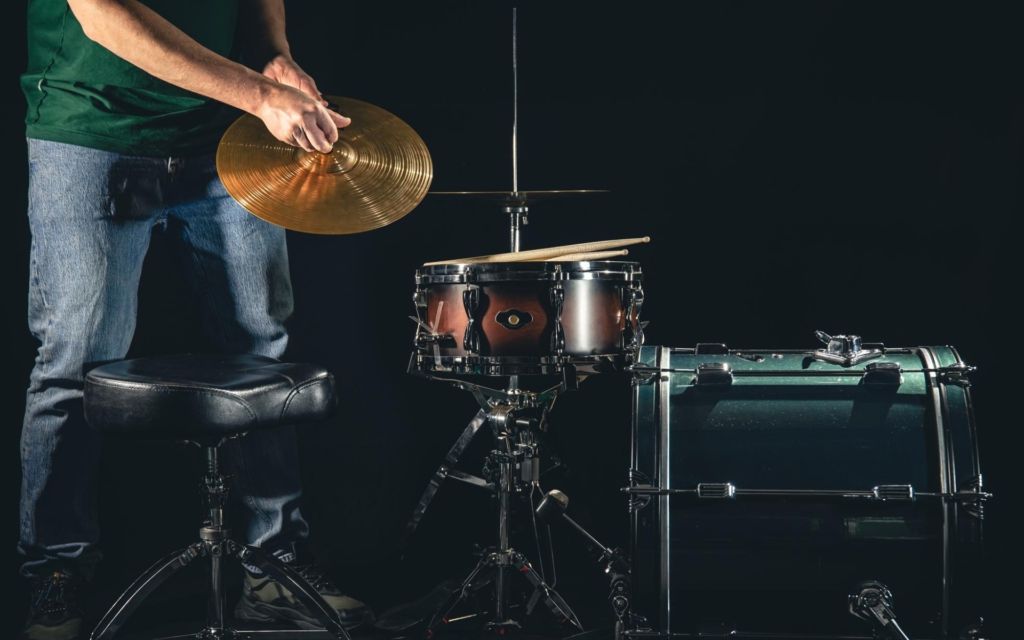When we first start to play the drums, we’ll simply use any sticks that we can get our hands on. As drummers develop their skills and techniques, they also start to become aware of how different sticks can affect their playing.
The vast range of stick sizes and styles available can make it tricky to figure out the best option for you. Then on top of that, you have to take into account the large differences in cost, which further adds to the confusion.
It’s understandable that drummers wonder how much they should be willing to invest in their drumsticks to achieve the balance of quality, durability, and value. In this guide, we’ll provide you with all of the information you need on the cost of drumsticks.
Contents
How Much Do Drumsticks Cost?
Professional-level Hickory drumsticks from a top brand cost around $15 a pair. But depending on the manufacturer, the materials used, and the overall quality of the drumstick, the cost can vary.
What Impacts Drum Sticks Price?
There are several key variables that determine the answer to the question: how much are drumsticks? Firstly, a manufacturer that is well known and has established a good reputation in the drum gear industry is able to charge more than lesser-known brands, so this can affect the price.
Furthermore, the materials used to construct the drumsticks are also a large contributing factor to their cost, as is the actual manufacturing process.
Brands that make drumsticks will ultimately have to figure out how much they’re spending on materials, how much the machinery they use costs them, and how much they have to pay their workforce.
Let’s take a look at the main contributing factors to drumstick prices in greater detail.
Materials Used in Drumstick Manufacturing

Drumsticks, like many other musical instruments and accessories, are made from specific types of wood, directly impacting the price at which the manufacturer sells them.
The most commonly used wood types for drumstick manufacturing are:
- Hickory
- Oak
- Maple
Wood types that are used much less often include:
- Birch
- Ash
- Rosewood
- Ebony
- Lancewood
The reasons that different types of wood result in different prices of drumsticks are down to several key factors. Firstly, how easy the wood is to source has a massive impact. If a certain wood is less available, its cost will inevitably be higher.
Likewise, wood types that are in high demand for other purposes will also cost more for the drumstick manufacturers to get hold of, thus forcing them to recoup those costs when selling the drumsticks.
Of the three most popular wood types, those made from maple tend to be the most affordable. Maple is a lightweight wood and is therefore popularly used for jazz and pop drumming, but they are also more likely to break.
Hickory, on the other hand, is significantly more durable than maple. Consequently, sticks made from this material tend to be more expensive.
Oak sticks are the heaviest and, therefore, most durable variety, but they’re somewhat of an acquired taste as they are considered to be less comfortable than the two previously mentioned varieties. In general, the price of oak and hickory sticks is similar.
The Drumstick Manufacturing Process

Along with the choice of wood that is used, the actual manufacturing process also affects the price of specific drumsticks.
Once the wood has been selected and sourced, it then must be dried using methods like kiln-drying and air-drying. The equipment used for these processes is expensive, as is the power that is required to perform them.
The logs are then cut into specifically sized pieces before the manufacturer must ensure that their moisture level is stable. Again, this part of the process requires large storage areas and equipment for measuring moisture levels.
The next part of the drumstick manufacturing process is to shape the wood accordingly. Using specialized cutting tools, the wood is shaped to a certain size, such as 5A, 5B, 7B, and so on.
Finally, if necessary, the manufacturer finishes the drumsticks with a lacquer to preserve them and ensure that they feel smooth.
As you can see, there is a lot that goes into the process of manufacturing drumsticks. The more attention to detail the manufacturer pays throughout the process, the better the end result, and the higher they are likely to set the price.
Comparing Drumstick Quality
We’ve discussed the main differences between the different materials used to create drumsticks, but it’s important that we go one step further and compare some high-end sticks with budget options.
This will help you to get a clear idea of what you can expect when paying different prices for your drumsticks. Ultimately, every drummer will settle on sticks that suit their style and budget accordingly, but it’s good to be aware of what the different types have to offer.
Pro-level Hickory Sticks vs. Cheap Maple Sticks
Professional drumsticks are designed to provide ultimate comfort and longevity. Hickory is a highly resilient and durable wood type, which makes it much less likely to break than maple.
While comfort is somewhat of a subjective aspect of drumsticks, it’s definitely apparent when comparing high-end hickory and affordable maple sticks.
Maple is around ten percent less heavy than hickory, and this makes it great for keeping the weight down when using sticks with larger diameters. However, cheap maple is so light and flimsy that it doesn’t provide anywhere near the feel of pro-level hickory sticks.
On the whole, if you invest in some high-end hickory sticks for around $15, they will improve every aspect of your playing by at least a little bit. Cheap maple sticks, which can be picked up for under $5, will break easily and are, therefore, less of a good investment in the long term.
How Often Do Drummers Need to Replace Sticks?

The frequency at which drummers need to replace their sticks varies depending on the individual and, of course, the quality of the sticks that they are using.
A skilled drummer who uses high-end sticks made from quality material like hickory may be able to use the same pair for a matter of weeks, while a beginner drummer using cheap maple sticks is more likely to break them every few days.
It’s a good idea to replace your sticks if you notice that they have become significantly worn to the point where they could easily snap during a live performance, rehearsal, or recording take – as continuing to use them will only cause you problems further down the line!
Ways to Save Money on Drumsticks
The goal when choosing your drumsticks should be to get the best value for your budget while ensuring that you like the way the sticks feel and complement your playing style.
Here are some tips you can use to get the most value for money when choosing drumsticks.
Bulk Buying
In many cases, it’s cheaper to bulk buy drumsticks rather than just buying one or two pairs at a time. If a pair of sticks are priced at $15, manufacturers may offer ten pairs for $135, effectively getting you one pair for free.
These types of deals are very common as they encourage drummers to stick with a specific manufacturer by getting used to their sticks.
If you can’t find any bulk buying deals online, going into your local music store and asking them if they have any offers is a great way to capitalize and potentially save some money.
Playing Techniques
While this may seem obvious, the single best way to save money on drumsticks is by not breaking them! While it’s true that sometimes it happens totally randomly midway through a song, there are ways to avoid breaking sticks as frequently.
Firstly, ensuring that you are playing with good technique is of vital importance. Accidentally hitting the rims of your drums is a large cause for wearing them down and breaking them, so practice your accuracy when moving around the snare and toms.
Hitting the edges of your cymbals is also likely to wear the sticks away more quickly, and while this cannot be avoided for certain styles and sounds, try to only do it when it is intentional.
Using Affordable Sticks for Practicing
Another tip is to use cheaper drumsticks when you’re practicing and save your most expensive drum sticks for when you’re performing or recording. You can still use the same size stick, but perhaps buy some that are specifically for rehearsing, which will be less costly to break.









